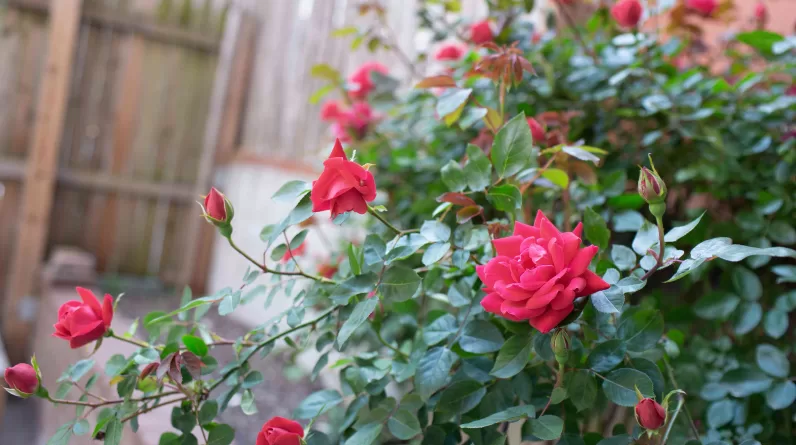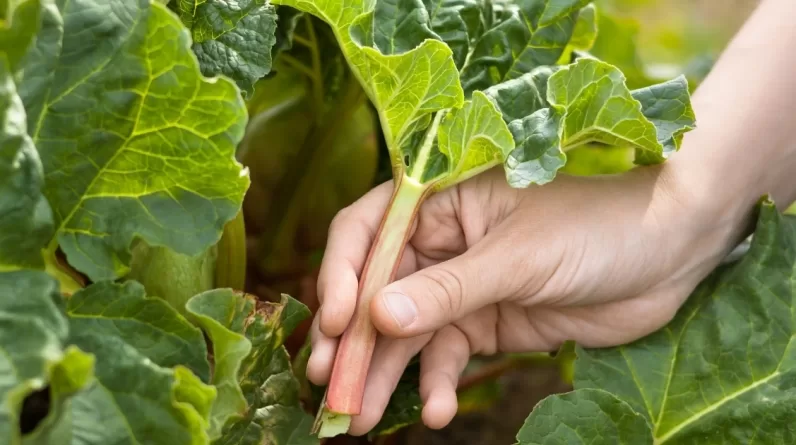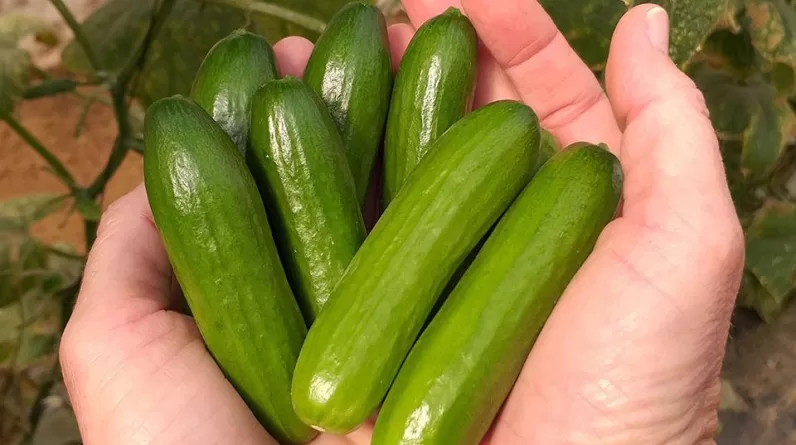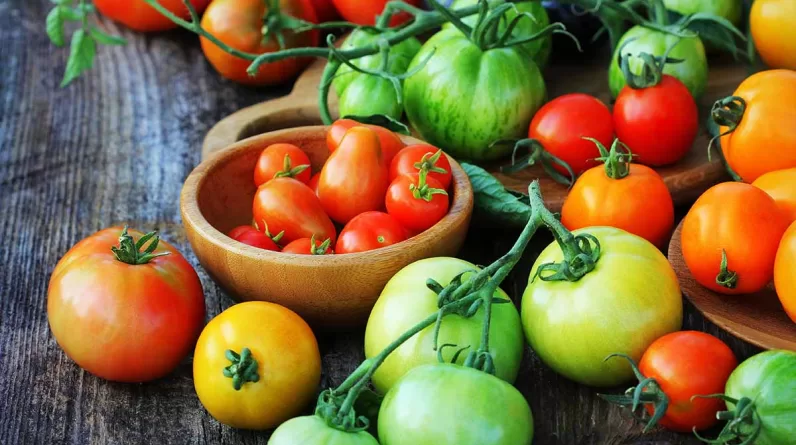Vegetable garden stakes are essential tools for any gardener. They provide support for plants to grow tall and straight, prevent them from falling over, and make it easier to harvest fruits and vegetables. Garden stakes come in different shapes, sizes, and materials, and can be used for a variety of plants, from tomatoes and peppers to beans and cucumbers.
One of the main benefits of using garden stakes is that they help plants receive more sunlight and air circulation. When plants are left to sprawl on the ground, they can become tangled, diseased, or shaded by other plants. Staking plants up allows them to grow upright and receive more light and air, which can lead to healthier and more productive plants. Additionally, staked plants are easier to water and fertilize, as the soil around them stays more accessible.
Garden stakes can also be used to create a more organized and aesthetic garden. By placing stakes in a row or a grid, gardeners can space out their plants evenly and create a neat and tidy appearance. Some garden stakes even come with labels or markers, allowing gardeners to identify their plants and keep track of their progress. Overall, garden stakes are a must-have tool for any gardener looking to improve their plant growth and garden layout.
Understanding Vegetable Garden Stakes
Vegetable garden stakes are essential tools for any gardener who wants to keep their plants healthy and upright. They come in many different materials, shapes, and sizes, and each has its own advantages and disadvantages. In this section, we will explore the different types of vegetable garden stakes and help you choose the right one for your garden.
Metal Vegetable Garden Stakes
Metal garden stakes are some of the most popular types of stakes used in vegetable gardens. They are durable, long-lasting, and can withstand harsh weather conditions. However, they can be prone to rusting if not properly coated or treated. One of the best types of metal garden stakes is galvanized steel, which is coated with a layer of zinc to prevent rusting.
When choosing metal garden stakes, it is important to consider the thickness of the metal. Thicker stakes are more durable and can support heavier plants, but they can also be more expensive. Thinner stakes are more affordable but may not be able to support larger plants.
In addition to metal stakes, there are also metal cages that can be used to support plants. These cages are made of metal wire and are designed to surround and support the plant as it grows. They are particularly useful for plants that grow tall and need additional support.
Overall, metal garden stakes are a great choice for any gardener who wants a durable and long-lasting stake that can withstand harsh weather conditions.
Types of Vegetable Garden Stakes
When it comes to vegetable gardening, garden stakes are an essential tool for supporting plants as they grow. There are several types of garden stakes available, each with their own unique benefits and drawbacks. Here are some of the most common types of vegetable garden stakes:
Metal Stakes
Metal stakes are a popular choice for vegetable gardeners due to their durability and strength. They are typically made of galvanized steel or aluminum, which makes them resistant to rust and other forms of corrosion. Metal stakes can be driven deep into the ground, providing a solid support for plants as they grow. They are also reusable and can be easily cleaned and disinfected between growing seasons.
Wooden Stakes
Wooden stakes are another popular choice for vegetable gardeners. They are typically made from hardwoods such as oak or cedar, which are naturally resistant to rot and decay. Wooden stakes are also biodegradable, which makes them an environmentally friendly option. They are easy to work with and can be cut to the desired length with a saw. However, wooden stakes may not be as durable as metal stakes and may need to be replaced more frequently.
Plastic Stakes
Plastic stakes are a lightweight and affordable option for vegetable gardeners. They are typically made from high-density polyethylene (HDPE) or polypropylene (PP), which makes them resistant to weathering and UV radiation. Plastic stakes are easy to install and can be reused multiple times. They are also available in a variety of colors, which can help gardeners organize their plants by type or location. However, plastic stakes may not be as strong as metal or wooden stakes and may not be suitable for supporting larger plants.
In conclusion, choosing the right type of vegetable garden stake depends on several factors, including the size and weight of the plants being grown, the growing conditions, and the gardener’s personal preferences. By considering these factors and selecting the appropriate stake type, gardeners can help ensure their plants grow strong and healthy.
Benefits of Using Garden Stakes
Using garden stakes can provide numerous benefits for a vegetable garden. Here are some reasons why gardeners should consider using garden stakes:
1. Improved Plant Growth
When vegetables are supported by garden stakes, they are able to grow upright and avoid touching the ground. This can prevent soil-borne diseases and pests from affecting the plants. Additionally, garden stakes can help keep the plants in an optimal position for receiving sunlight, which can improve their overall growth and yield.
2. Space Optimization
Garden stakes can help gardeners maximize their available space by allowing them to grow plants vertically. This can be especially useful for small gardens or for gardeners who want to grow a large number of plants in a limited area.
3. Easy Access
Using garden stakes can make it easier for gardeners to access their plants for pruning, harvesting, and other maintenance tasks. When plants are supported by stakes, they are easier to see and reach, which can save time and effort.
4. Durability
Metal vegetable garden stakes are a popular choice for gardeners because they are durable and long-lasting. They can withstand harsh weather conditions and are resistant to rust and corrosion.
In summary, using garden stakes can help improve plant growth, optimize space, provide easy access, and offer durability. Gardeners should consider using metal vegetable garden stakes for a reliable and long-lasting option.
How to Choose the Right Garden Stakes
When it comes to choosing the right garden stakes for your vegetable garden, there are a few things to consider. Here are some tips to help you make the right choice:
Material
The first thing to consider is the material of the garden stake. There are several options available, including wood, bamboo, metal, and plastic. Here are some pros and cons of each:
- Wood: Sturdy and durable, but can rot over time and may need to be replaced.
- Bamboo: Lightweight and inexpensive, but may not be as sturdy as other materials.
- Metal: Strong and long-lasting, but can be more expensive and may rust over time.
- Plastic: Affordable and weather-resistant, but may not be as sturdy as other materials.
Height and Thickness
The height and thickness of the garden stake will depend on the type of plant you are growing. For example, taller plants like tomatoes will need taller stakes, while thinner plants like beans may only need a shorter stake. Make sure to choose a stake that is thick enough to support the weight of the plant.
Shape
Garden stakes come in a variety of shapes, including straight, curved, and spiral. The shape you choose will depend on your personal preference and the type of plant you are growing. Straight stakes are great for plants that grow straight up, while curved or spiral stakes can provide additional support for plants that may need it.
Color
While not as important as the other factors, the color of the garden stake can also be a consideration. Some gardeners prefer stakes that blend in with the plants, while others like to use brightly colored stakes to add a pop of color to the garden.
Overall, choosing the right garden stakes for your vegetable garden can help ensure that your plants grow strong and healthy. By considering the material, height and thickness, shape, and color, you can find the perfect stake for your needs.
DIY Garden Stakes
Garden stakes are an essential tool for any vegetable gardener. They help keep plants upright and organized, which can lead to a more bountiful harvest. While there are many types of garden stakes available for purchase, making your own can be a fun and cost-effective DIY project.
To make DIY garden stakes, you will need a few materials, including:
- Wooden dowels or bamboo poles
- Saw
- Sandpaper
- Paint or wood stain (optional)
- Paintbrush (optional)
First, measure and cut the wooden dowels or bamboo poles to the desired length. Sand the edges to smooth out any rough spots. If you wish, you can paint or stain the stakes to match your garden’s aesthetic.
Once the stakes are prepared, it’s time to get creative with how you use them in your garden. Here are a few ideas:
- Use them to mark the location of plants: Simply insert the stake into the ground next to the plant, and label it with a tag or marker.
- Create a trellis: Arrange the stakes in a teepee shape and tie them together at the top. Use twine or wire to create a trellis for climbing plants like tomatoes or cucumbers.
- Support heavy plants: For plants that require extra support, such as peppers or eggplants, insert the stake next to the plant and tie it to the stake with twine or wire.
DIY garden stakes can be customized to fit your specific needs and preferences. They are an easy and affordable way to add a personal touch to your garden while also providing practical support for your plants.
Installation Process of Garden Stakes
Step-by-Step Guide
When installing garden stakes, there are a few steps to follow to ensure they are properly secured. The following is a step-by-step guide to installing garden stakes:
- Determine the placement of the stake: Before installing the stake, decide where it needs to be placed. The stake should be placed next to the plant, but not too close that it will damage the roots.
- Dig a hole: Use a shovel or a trowel to dig a hole in the soil where the stake will be placed. The hole should be deep enough to support the stake and keep it upright.
- Insert the stake: Place the stake in the hole and pack soil around it to secure it in place. Be sure to pack the soil tightly to prevent the stake from moving.
- Tie the plant to the stake: Use garden ties or twine to tie the plant to the stake. This will provide support for the plant and prevent it from falling over.
Common Mistakes to Avoid
When installing garden stakes, there are a few common mistakes that should be avoided to ensure they are effective. The following are some mistakes to avoid:
- Placing the stake too close to the plant: If the stake is placed too close to the plant, it can damage the roots and prevent the plant from growing properly. Make sure to leave enough space between the stake and the plant.
- Not securing the stake properly: If the stake is not secured properly, it can move and damage the plant. Be sure to pack the soil tightly around the stake to keep it in place.
- Using the wrong type of stake: Different plants require different types of stakes. Make sure to use the appropriate stake for the plant you are supporting.
By following these steps and avoiding common mistakes, gardeners can properly install garden stakes to provide support for their plants and help them grow strong and healthy.
Maintenance and Care for Garden Stakes
Garden stakes are an essential tool for any vegetable garden. They provide support to plants and help keep them upright. However, like any tool, garden stakes require maintenance and care to ensure they last for multiple growing seasons. Here are a few tips on how to maintain and care for your garden stakes:
1. Clean Garden Stakes Regularly
It’s essential to keep garden stakes clean to prevent the buildup of dirt, debris, and pests. Regularly wipe down your stakes with a damp cloth to remove any debris or dirt. If you notice any pests, use an organic insecticide to prevent infestations.
2. Store Garden Stakes Properly
When the growing season is over, it’s essential to store your garden stakes properly. Remove any excess dirt or debris and store them in a dry, cool place. Avoid storing them in direct sunlight or damp areas, as this can cause them to rot or weaken over time.
3. Check for Damage
Before using your garden stakes each season, it’s essential to check them for damage. Look for any cracks, splinters, or signs of wear and tear. If you notice any damage, replace the stake immediately to prevent it from breaking and damaging your plants.
4. Use Quality Materials
Investing in high-quality garden stakes can save you time and money in the long run. Look for stakes made from durable materials like bamboo, metal, or treated wood. Avoid using untreated wood, as it can rot and break down quickly.
In conclusion, maintaining and caring for your garden stakes is crucial to ensure they last for multiple growing seasons. By following these simple tips, you can ensure your stakes remain in good condition and provide the necessary support for your plants.
Conclusion
In summary, vegetable garden stakes are a useful tool for any gardener looking to maximize their harvest. By providing support and structure to plants, garden stakes can help prevent damage from wind, rain, and pests. They also make it easier to keep plants organized and neatly spaced, which can improve overall growth and yield.
When choosing garden stakes, it is important to consider the specific needs of your plants. Some plants require taller stakes or more support, while others can get by with shorter, lighter stakes. It is also important to consider the material of the stakes, as some materials may be more durable or weather-resistant than others.
Overall, vegetable garden stakes are a simple yet effective way to improve the health and yield of your garden. By taking the time to choose the right stakes and use them properly, you can enjoy a bountiful harvest of fresh, healthy vegetables all season long.








